It has been a couple weeks since my last post. (I was on vacation in Colorado.) Much has happened since I last wrote including house updates and a report of my vacation time. Lets get to it!
Because I have so much ground to cover I am going to mention just a few of the more important details for each general topic. Home news is up first.
A bit more painting has been done on the front porch but it is not yet completed. Here is the front porch east wall getting a first coat of paint.
While I was gone Pam added a second coat of paint to the porch and began painting the west wall off the laundry room.
Pan did as far up as she could reach from our aluminum ladder. We hope to rent some scaffolding from Bob the Builder and finish the wall and paint the detail work up to the top of the peak over Labor Day weekend.
More flowers are blooming, keeping us supplied with “color” around the yard.
Not shown is detail painting Pam has done on some of the north and east porch posts. I will have more on that in my next post. Work goes on but at a slower rate due to high humidity and temperatures levels that limit time outdoors.
The next topic covers my time in Colorado in early August. There are three general divisions to discuss: Work on The Lot, ATV rides, and a special guided tour.
Given my decreased energy levels I decided to concentrate on cleaning up areas where Pam and I had previously worked. Aspen trees are not long-lived and there are always some dead trees to remove and brush to cut. On my June trip I made a few brush piles that I wanted to chip this time, and I was able to get that done. Going through the Aspen Grove and Bird House Ridge I removed several more trees, mostly small but a couple were big enough to salvage for firewood. Some of these were chipped but a few remain for my next outing.
While I spent quite a bit of time working and walking on The Lot, I had also planned a return to the Alpine Tunnel, the first railroad tunnel to go under the continental divide. Pam and I had visited the tunnel 40 years ago and I wanted to make a return visit to see what has changed since then. This was an all-day event. Suffice to say I took a lot of photos that only a railroad history buff would find interesting, so here are just a few of the many views I took along the way.
The first surprise is that the area is now a National Historic District with much signage along the route. I was pleased to see this historic bit of railroad is now recognized as something to preserve.
The railroad is most famous for the rock work required to build a shelf road along some towering cliffs. Known as “The Palisades” the work was done beginning in 1880. The railroad ran until 1910 and the rock work survives to this day with only minor degradation.
You really need to click on the above photo to blow it up to a larger size to appreciate it. As you can see, weather was just about perfect.
I will have a full gallery featuring photos from this trip shortly and will add it to my Galleries page. I will let you know when the gallery is completed but it may take some time due to the amount of material I wish to include. Watch for it.
Another high post of my vacation occurred when I went to visit the top of Boreas Pass. (Readers may remember that Pam’s mother’s ashes were spread at the top of the pass as she had requested.) We try to make the trip each year we visit Colorado.
The route to the pass goes through the town of Como where the railroad had a roundhouse in use from the late 1800s into the mind-1930s. Over the years we had observed the roundhouse undergoing repair and reconstruction work. On this trip the yard seemed to be unusually busy so I stopped to see what the excitement was about.
The owners of the old roundhouse are in the process of building a replica water tank. Another couple had stopped to look over the work and I joined them.
During the talk I asked if the roundhouse was ever open to the public. (It is one weekend of the year.) I said I would not be around for that event, and before you knew it, I, and the other couple, were invited on a personal tour of the roundhouse!
My camera’s battery had gone dead and was recharging so I reached back for my old Canon but it has no flash so most of my inside photos did not turn out well. Still, I enjoyed the tour and learned more about the history of the Denver, South Park, and Pacific Rail Road. I had known some of the history as this is the rail road that created the Alpine Tunnel but the guide had even more information at hand. I was delighted at this turn of events.
A few roundhouse photos will be included in my Alpine Tunnel gallery as both the tunnel and the roundhouse were part of the same railroad line.
After the guided tour I continued my trip to the top of Boreas Pass, where little has changed over the last several years. However, the public outhouses are now locked.
One thing that I will mention is that a smokey haze was present throughout most of my vacation, a by-product of all the fires in the western states. The haze was particularly noticeable from the Boreas Pass Road.
I also ran my ATV on some forest service trails including LaSalle Pass but those photos will have to wait for an upcoming post.
Finally, just a couple miscellaneous photos taken during the trip.
No Photo Archive this week.
That’s it for now. Thanks for looking in!
Pam’s Penny
While Himself was in Colorado, oldest cat London (17+ years) went into his final decline; he died in my arms in the middle of a stormy night. London came into my life as a kitten, when I was working for a Colorado animal shelter and had just started investigating rescue. His life spanned an intense kitten-fostering period in our Colorado years – 33 kitten litters fostered in a decade. London’s passing is a bittersweet goodbye to those Crazy Cat Lady days.
Happy Trails.
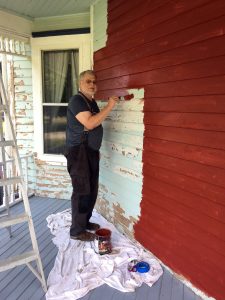
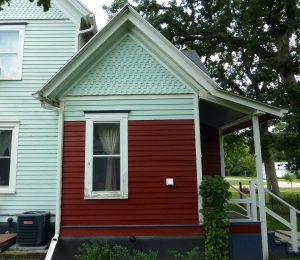
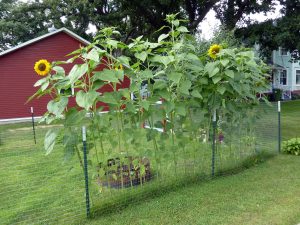
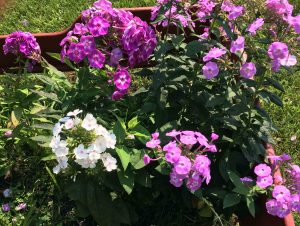
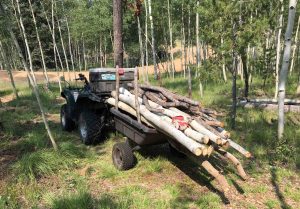
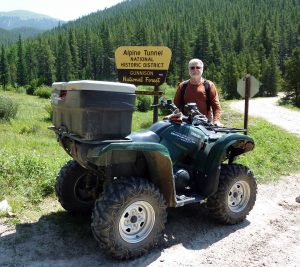
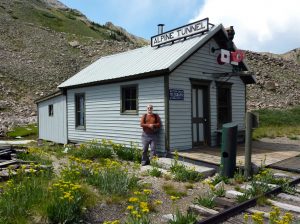
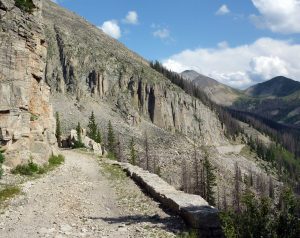
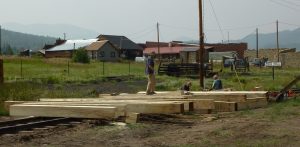
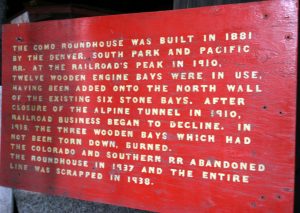
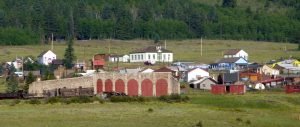
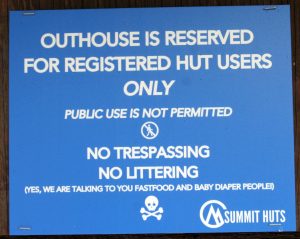
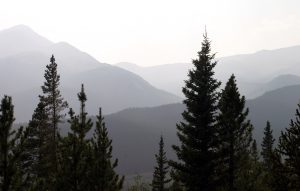
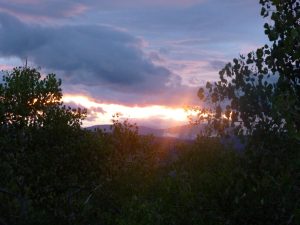
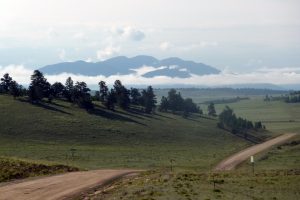
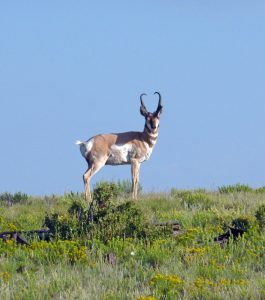
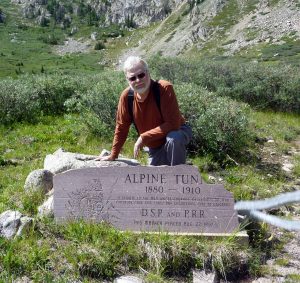
London’s passing is sad, but he did live a long life, and his memory lives on with Becky’s new cat’s middle name…
It would be interesting to see DSP & P’s initial engineering report before they started the Alpine Tunnel bore. It’s fairly obvious from your Palisades photo that there’s quite a bit of loose rock. It took 3 times the estimate for the bore as they found “unanticipated” loose rock & clay. Timber framing didn’t hold up, forcing tunnel closure.
Also interesting how (they) managed to find firm footing for the railroad bed amidst what looks to be easily fractured rock.
Larry:
Since Pam has spoken about London, I will address your comments about the rail road. Yes, all of the companies that tunneled through the continental divide expected to find some solid rock and were disappointed when they found very little. All the bores had to be lined with timbers and planks to keep the tunnels open. Colorado currently has two operating lines that bore under the divide.
In the case of the Alpine Tunnel, original cost estimates were $120,000.00 but the final coat was around $300,000.00. (1880 dollars!) However, the main reason for closing the tunnel was not a cave-in, but rather the high cost of trying to operate a rail line at over 11,000 foot elevation in the Rockies in winter. Operating costs sucked much of the profit from the line and, in the end, the line was abandoned as to expensive to maintain. Since the closure in 1910 the tunnel has caved in, but that was not the reason the line was abandoned.
The footings for the retaining walls are around 2 feet thick, enough for the size of trains there were running back then. I was told the only reason one section failed is that it was hit from a rockslide from above. The county has the funds to repair the break but had not done so last year or this year is due to COVID-19 which has kept work on the line on hold.
40 years ago Pam and I drove our Jeep Cherokee all the way up the line to the Alpine Station building. I hope repairs to the line will let people continue to enjoy this historic part of Colorado.
Jer
Yes, London enjoyed a long life and [pretty much] a good one. I’ll probably adopt another Siamese into my life…someday. Siamese sure do have buckets full of “purrsonality!”